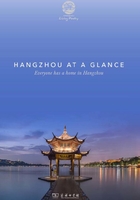
West Lake’s Flowers for Every Season
West Lake is big. Really big. Every drop of it is steeped in history, poetry, commerce, and nature. And, while all that might be very interesting, it’s hardly helpful on a bike ride or a hike along the many paths that crisscross the shore. Over the years, from entrepreneurs to emperors, great care has been taken to manicure West Lake in a myriad of flora to stun poets and peasants alike. And, if you’re fascinated by all things floral, there’s a flower for every season in Hangzhou.
Winter Plum Blossoms
Winter isn’t known for being the best time to catch flowers in full bloom, but the plum blossoms of Hangzhou are an exception. With the rest of the city bundled up in heavy coats for the cold weather ahead, the plum blossoms come out in force on the New Year (Gregorian and Chinese), with perfect viewing in January and February. The best place to see them is in the northwestern corner of West Lake at Gushan Hill; the famous Northern Song Dynasty poet Lin Bu spent his time planting plum trees on Gushan Hill and left in his wake the immortal lines, “When everything has faded, they alone shine forth, encroaching on the charms of smaller gardens.” So in love was he with the plum blossoms that people often commented that the plum blossoms were his wife and that the cranes were his children. Lovers of this flower can also find it blooming wildly in the Hangzhou Botanical Garden (杭州植物园) and in the Xixi National Wetland Park (西溪国家湿地公园)—as well as numerous spots throughout the city. The plum blossoms are so cherished in winter that it’s become somewhat of a crowded tradition to go and see the plum blossoms at Lingfeng Peak (灵峰) or Chaoshan Hill (超山) for Chinese New Year. And who can blame them? There are few sights more amazing than a forest of flowers covered in snow.


A Peachy Spring
Right when the plum blossoms start to give out, the peach blossoms pick up the slack. You might see them budding in March, but April is when they really shine—quite often around Qingming Festival. The Bai and Su causeways are the best place to see these little flowers, interwoven with walking and biking paths and often punctuated by willow trees. Chief among these spots is the Spring Dawn at Su Causeway. The Broken Bridge is said to be a great spot for gazing at the peach flowers, but there’s also Viewing Fish at Flower Pond (花港观鱼), where visitors feed the orange carp below and stare at the pink blooms above. Obviously, there are more flowers to see in spring, so if you find yourself on the Bai Causeway, keep an eye out for cherry blossoms as well as peach blossoms.
Summer Belongs to the Lotus
After a spring of all manner of blooms, there is perhaps nothing more spectacular in pure scale than the lotus flowers of Hangzhou. This is the flower to really see on West Lake—miles and miles of it. The history of the lotus as a source of cultivation goes back almost 5,000 years, and it’s pretty obvious why people come from around the country to see it bloom in Hangzhou’s summers. West Lake alone boasts 14 lotus cultivation areas but the most popular place is at the Broken Bridge, known for its red lotus. Also, while tourists flock to the floral majesty of Gushan Hill, locals know that there’s a better place for lotus right behind it, where lotus is cultivated for various dishes in the local cuisine. For a more up-close and personal look, there’s the Beishan Road lotus near the famous spot, Breeze-ruffled Lotus at Quyuan Garden (曲院风荷), where the path and markets near the water provide an elegant view—though, be warned, if you’re sitting at a cafe, there could be so many lotus blooms that you might not be able to see the water.

Osmanthus, King of Kings
Fittingly, as the year draws to a close, the floral phantasms of spring and summer die off—the lotus wilting and the peach and plum blossoms long gone. But osmanthus is the king of flowers in Hangzhou, or, rather, the city’s official flower. It’s hard to match the beauty of a forest covered in pink from the peach blossoms or the majesty of a green river turned red by lotus blooms, but what the osmanthus lacks in splendor it more than makes up for with scent. From September to early October, certain areas of Hangzhou take on a smell like no other. Of the more than 100 varieties of osmanthus trees (perhaps known more commonly as devilwood in some areas), 67 can be found in Hangzhou. And while there’s certainly no shortage of places to catch a few osmanthus in the streets (or on your plate for that matter), one of the best areas for that distinctive smell is the Manjuelong Village (满觉陇村) where you will find one of the New Top Ten Scenes of West Lake: Sweet Osmanthus Rain at Manjuelong Village (满陇桂雨)—go for the hermits, stay for the osmanthus. More than 7,000 osmanthus trees (some over 200 years old) can be found in this area and there is even a West Lake Osmanthus Festival around National Day in October, when guests can eat what they’ve been smelling.
